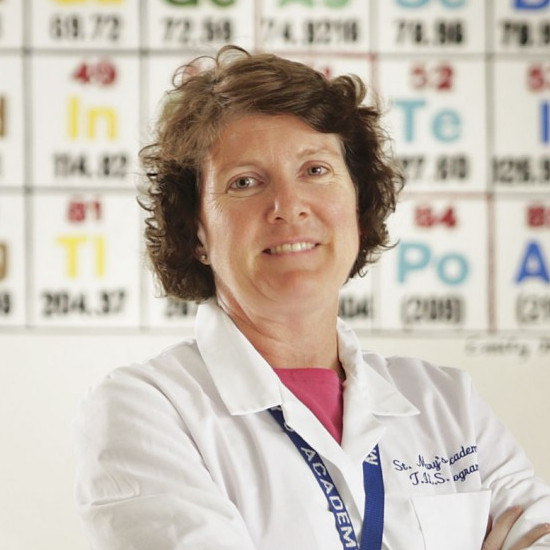The Science of Stellar Teaching
Open gallery

While a student at St. Mary’s Academy, a high school for girls in Portland, Maureen Daschel used to sit with rapt attention as Sister Rosemary Ann Parker loaded filmstrips into the projector. Barely able to contain her enthusiasm, Daschel concentrated on images of what was then cutting-edge science, cast on a pull-down screen.
“Those mid-1970s filmstrips depicted concepts that would eventually become the Human Genome Project,” says Daschel. “Sister Rosemary loved science. She pushed us to learn, ask questions, and use our knowledge to be better people. She’s the reason I became a science teacher.”
Last fall, the Oregon Science Teachers Association honored Daschel as Outstanding Classroom Teacher at a ceremony in Coos Bay.
“One of the best parts of winning the award has been reconnecting with kids I’ve taught over the years,” says Daschel, who returned to St. Mary’s as an educator.
“I loved learning about all the cool things they’ve been doing with their lives.”
Her colleague Rachel Aazzerah, whom she met through the Partners in Science program, nominated Daschel for the award. The program is funded by the M.J. Murdock Charitable Trust and allows science teachers to work in a research lab for two summers. Daschel worked at OHSU’s Oregon Regional Primate Center.
“It was a enlightening opportunity,” she says.
Daschel, who chairs St. Mary’s science department, teaches chemistry, honors chemistry, and scientific research methods.
“My research methods class stems directly from my experience at the primate center,” she says. During the first semester, students visit labs, listen to guest speakers, read journal articles, and watch videos to better understand the art of research. During the second semester, they are paired with mentors in the community to pursue a research project. Students may find themselves working at OHSU, a local college, or a science-focused business. At the end of the year, they write papers, design posters, and deliver presentations about their projects.
Daschel also founded the Teaching, Integrating, and Exploring Science mentoring program, which pairs St. Mary’s high school students with fifth-grade girls from local parochial schools.
“Girls on the brink of middle school need to have mentors,” says Daschel. “Putting them in touch with high school girls who like science—and who also play lacrosse or sing in a school musical—piques their interest.” Daschel, who has worked at St. Mary’s for 27 years, enjoys teaching in an all-female environment. “In my experience, boys are more competitive, and girls are more cooperative,” she says. “Girls will work together to meet your expectations no matter how high you set the bar.”
And in the lab, says Daschel, girls are willing to dig in and get their hands dirty because there are no boys to do it for them—or to make them self-conscious about their science knowledge.
Daschel also clearly understands the dual purpose of her role as a secondary science teacher. Students who plan to major in a science field need to become experts in fundamentals, processes, and discovery, she says. Students planning nonscientific careers need to be scientifically literate. They must also develop critical thinking skills and the confidence to question experts in any field.
“In an increasingly technology-focused world,” she says, “my students need to understand that everything they do involves science.”
—by Pattie Pace
More L&C Magazine Stories
Lewis & Clark Magazine is located in McAfee on the Undergraduate Campus.
MSC: 19
email magazine@lclark.edu
voice 503-768-7970
fax 503-768-7969
The L&C Magazine staff welcomes letters and emails from readers about topics covered in the magazine. Correspondence must include your name and location and may be edited.
Lewis & Clark Magazine
Lewis & Clark
615 S. Palatine Hill Road MSC 19
Portland OR 97219

